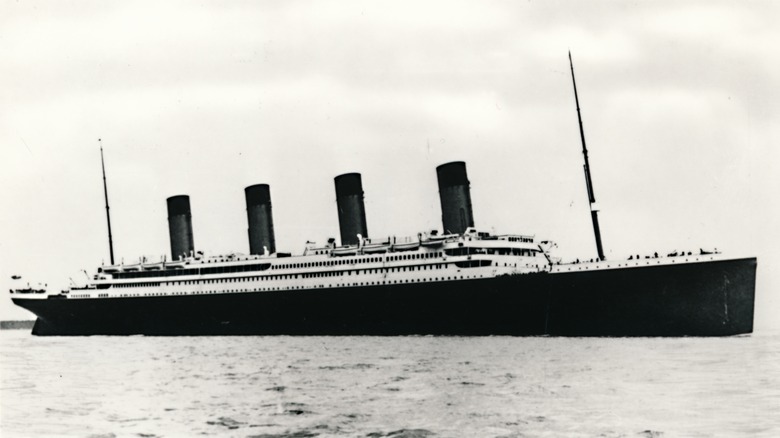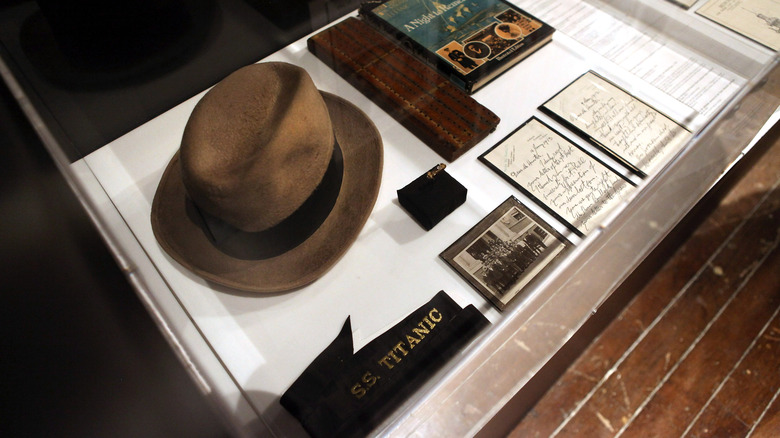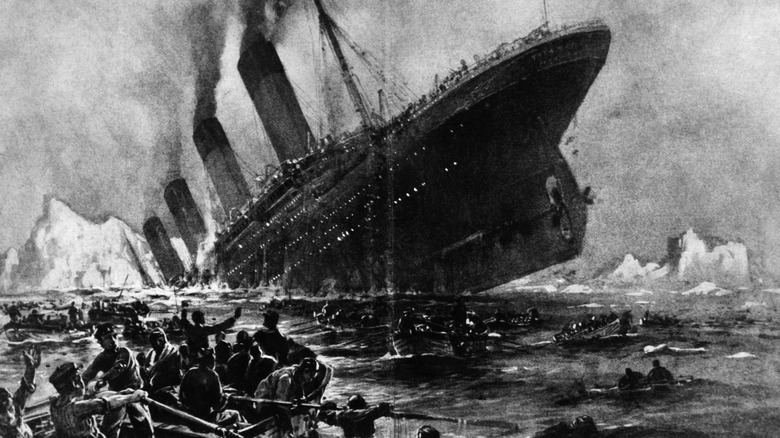The Real Reason They Haven't Recovered The Titanic
On April 16, 1912, The Guardian reported that "the maiden voyage of the White Star liner Titanic, the largest ship ever launched, has ended in disaster." The shocking news of the loss — more than 1,500 lives, when the ship struck an iceberg near Newfoundland, Canada and sank in the early morning of April 15 — made worldwide headlines, according to National Geographic. The tragedy would become a milestone in maritime disasters and gain even more attention after the release of the blockbuster film written and directed by James Cameron in 1997, per Britannica.
Since the tragic events of more than a century ago, the remains of the great ship have rested on the bottom of the North Atlantic, 2.4 miles down in a watery grave, according to Titanic Facts. A common question that often comes up is why no one has tried to salvage the ship. The simple answer is that there really isn't that much left to save. It's so rusted that any attempt to bring it to the surface would result in its complete destruction, according to Technology.org. But there are more complex issues at play as well.
A pact to preserve the remains
Even if you could bring what's left of the Titanic to the surface, a treaty between four nations — the United States, the United Kingdom, Canada, and France — wouldn't allow it to happen, at least not without a lot of bureaucratic red tape. The treaty, which was initially hashed out in the 1990s, went into effect in 2019, after the U.S. ratified the agreement that the UK had signed in 2003. According to The Ottawa Citizen and Gov.UK, the agreement made the wreck an "international maritime memorial site." The terms of the deal meant that only two of the four nations had to ratify the treaty for it to go into effect.
The treaty makes the site "a memorial to those men, women, and children who perished" in the disaster and limits "entry into the hull sections of RMS Titanic so that they, other artifacts and any human remains are not disturbed" and gives the governments the "power to grant or deny" licenses to remove artifacts from outside of the wreck site, according to the treaty and Gov.UK.
Slow decay and a botched job
In 1985, a U.S. Navy-financed underwater robot named Argo accidentally discovered the Titanic's remains, after treasure hunters and salvage companies had been looking for years, per The New York Times. Soon the rush was on to salvage the historic wreck. In 1996, the only attempt to bring up part of the ocean liner ended in disaster. RMS Titanic Inc., which owns the salvage rights, tried to haul up a 21-ton section of the hull, but the nylon cables used for the job snapped, and the 24-by-16-foot piece of the Titanic sank back down to the ocean floor, per the Associated Press.
Today, iron-eating bacteria and ocean currents are chipping away at what's left of the Titanic. Since 1985, the ship has disintegrated markedly. The poop deck has fallen in on itself, and the forward mast and gymnasium have collapsed, per CBS News. The ocean that claimed the Titanic's 1,500 passengers will one day take the ship itself as well.


